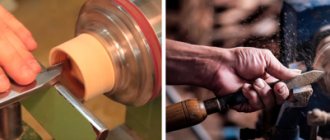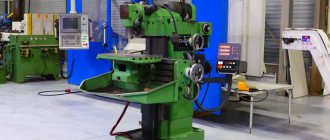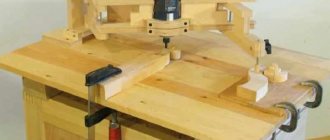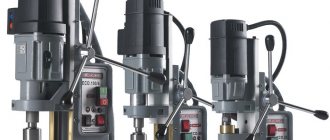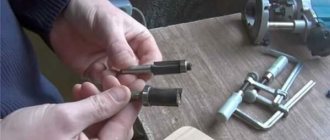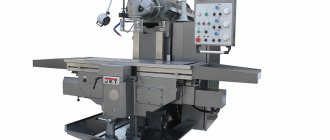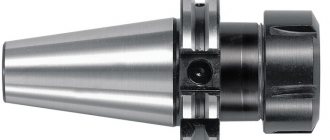CNC machines have made the work of wood carvers easier and faster. New technologies come to the rescue, but do not replace manual labor and still cannot work miracles. Therefore, basic knowledge of how different types of wood can be processed, what raw materials are not suitable for creating a relief product, what 3D models are suitable for work - remain the most important for developing a business involving a CNC machine.
Types of wooden blanks. Classification and features of raw materials:
Wood is considered a convenient and practical material. But if you delve deeper into the technology, it turns out that choosing the right material is much more difficult than it seems. It depends on the 3D model, the structure of the tree species, and other nuances.
The main classification of raw materials is based on the density of wood varieties:
- soft woods (aspen, linden);
- universal (birch, maple);
- hard varieties (beech, oak, mahogany);
- fibrous species (pine, spruce and other conifers).
Another indicator that CNC machine operators always pay attention to is the moisture content of the raw materials. Some varieties are naturally juicy and difficult to dry. Others may be too wet due to improper storage. Even blanks made from the same type of wood can have different humidity levels, which will affect the final result.
Different types of wood differ in:
- color;
- pattern and texture;
- density and ability to split (grindiness).
The result of a CNC machine is even influenced by such factors as the age of the tree (this parameter is especially important for deciduous trees) and the place where it grows.
Room
organize a mini carpentry workshop in your garage or a separate room in the local area if you live outside the city or have a dacha. In the absence of such an opportunity, suitable premises can be rented.
Required area: 20-40 square meters . The room must meet fire safety requirements, be heated and have forced ventilation. When expanding production, additional space will be needed for storage and drying of products.
How to choose a workpiece:
Each grade has characteristics that must be taken into account if you plan to mill the product on a machine. When a master cuts with a hand tool, he feels the force of pressure and can change the pattern in the process if the workpiece requires it. The machine is unable to stop to think and suggest another cutting method to the operator. He simply does his work on wood, prescribed by a loaded program with a certain 3D model for CNC, plunging to different depths into the material and removing the required amount of chips.
Here are the basic principles for choosing material:
- A preliminary assessment of the 3D model is desirable: are there many small patterns, what will the product be used for, what load should it withstand;
- It is important to remember that hard types of wood are preferred for a CNC machine. Oak, beech, maple and ash are considered universal. It is difficult to cut small patterns out of these rocks by hand, but the sharp cutters of the machine cope with this perfectly. As a result, the finished product will truly be of high quality and durable;
- practice shows that among the budget options, birch is best suited for the machine, and among more expensive ones, beech, oak, ash or pine. They do not lint, easily withstand the impact of a milling cutter and require virtually no manual modification, and also allow you to turn almost any designer’s ideas into reality.
Demand and competition analysis
The first thing you need to do is study the needs of potential clients for Internet services: Wordstat, Yandex.Vzglyad, as well as the offers and pricing policies of competitors. Think about how you can stand out from them, what additional services you can offer. For example, free delivery of orders, furniture designer services, home measurement, and others.
The versatility of the machine allows you to work with different niches and target audiences, both in the private and corporate spheres. Therefore, gaining a foothold in the service market will not be difficult. The demand for products made from natural materials is growing from year to year. In demand: pieces of wooden furniture, interior parts, original souvenirs, toys, musical instruments and others. All this can be produced on a universal CNC machine .
Features of choosing a 3D model for a CNC wood cutting machine:
Virtual models are a digital image of a future product, with the help of which milling equipment builds a program. They are:
- simple ones, which can be used to cut furniture parts;
- complex - with drawings and patterns for application to facades and surfaces (in 2d and 3d format - i.e. flat or convex);
- completely three-dimensional - for example, figurines and three-dimensional sculptures, carved columns and original balusters, etc.
The choice of raw materials largely depends on the model. For a CNC machine for wood, you can also use MDF - wood fibers glued and molded using special equipment. This material is suitable for the simplest ideas: wall panels, cabinet fronts, countertops, etc. MDF can be used when you plan to apply a simple three-dimensional design and then cover the workpiece with varnish or paint. Finishing in this case is not only beauty, but also the wear resistance of the future product.
The least suitable for complex milling are laminated chipboards and chipboards. When using these materials, choose two-dimensional flat models.
To manufacture complex products using 3D models for CNC woodworking, skills and knowledge are required. MDF is not suitable because it does not have the necessary safety margin. A three-dimensional image planned in a layout cannot be applied to a surface that is not intended for this. Usually, for sculptures and bas-reliefs, an experienced master chooses those types of solid wood that are convenient for him to work with.
How much do you need to invest at the start?
The initial investment depends on the range of work performed and specialization. With a narrow list of services, you can get by with an inexpensive machine model and a minimum of tools. The costs in this case will be 150 thousand rubles, of which:
- To purchase a machine you will need at least 100 thousand rubles.
- For the purchase of equipment for processing materials - 10 thousand rubles.
- To pay for the rent of the premises - 30 thousand rubles.
- For advertising – 10 thousand rubles.
Current expenses will include: purchase of consumables, payment of utility bills, rent, advertising, which will amount to about 40 thousand rubles.
For greater productivity, you will need a complex machine model costing 200 thousand rubles. and equipment with furniture for 25 thousand rubles. Monthly expenses will also increase to 100 thousand rubles.
Having suitable premises and tools and purchasing used equipment will allow you to save. When purchasing a machine, study its technical and operational characteristics and operational capabilities. Choose equipment from reliable manufacturers who are responsible for the quality of the product.
What can be made from solid wood?
Wood is a timeless material, fashionable and relevant in our time. At the same time, it is durable compared to plastic, but quite light compared to metals and stones. Easily amenable to processing, painting, artificial aging, restoration. All this determines its popularity and widespread use.
Absolutely all 3D models presented in our online store are suitable for production on a woodworking machine. All of them are made in stl format, readable by any suitable programs. So feel free to choose any one and create!
Possible business problems and risks
Since the machine is controlled by numerical control, the operator practically does not take part in its operation. Therefore, the influence of the human factor is not relevant for this business. Common risks include:
- Material defects or poor quality: purchasing from a regular, reputable supplier will help you avoid the problem
- Increased competition: high quality products, attractive prices, additional services, and product exclusivity will help minimize the risk
- Lack of demand: indicates insufficient marketing activities, incorrectly chosen niche or pricing
With the right approach to business, risks can be avoided or their impact can be minimized.
The peculiarity of the business is that without ensuring stable sales volumes and established infrastructure, production should not be expanded. It is better to consolidate success by developing it, improving the quality of products, establishing production chains with partners, and retaining customers.
Setting the milling depth
In order not to overload the milling machine, it is advised not to immediately set the required depth, but to increase the value in several stages, in steps.
Changing the depth level is carried out using limiters made in the form of a disk with fixed stop legs of different lengths, which is installed under the bar. The number of such stops is usually 3-7, and a flag-shaped latch is used for fastening.
Adjustment of the milling depth is carried out according to the following algorithm:
- Place the router on a flat surface.
- Loosen the clamps and press the cutter until it rests on the surface.
- Unscrew the lock.
Unscrewing the lock
- Release the turret stop.
- On a disk with thrust legs, the one that corresponds to the required milling depth is selected. The disk is installed in the desired position.
- The bar is held with a finger without fixing the screw. The moving pointer moves so that its value converges with the zero mark.
- Raise the rod to the mark that corresponds to the required depth, then lower the turret stop lock.
Interesting! Some foreign milling cutters are additionally equipped with a special wheel for precise adjustment of the processing depth, which allows you to set a new value without disturbing the previous settings.
Hiring
If you have certain skills in operating controlled milling machines, at the stage of business promotion, take on the operator’s function. If you don't have enough experience, you'll have to learn. Take courses and master the principles of working in special graphics programs. It's not as difficult as it might seem. You will need no more than a month to open your own production.
If you are targeting a wide range of production and have diverse equipment, hire 2-3 professionals.
You will need a manager - he will search for sales channels, send out commercial offers, and run an advertising campaign.
To work with documentation and tax reporting, it is not necessary to hire a full-time accountant; contact an outsourcing company. Sign an accounting support agreement with her - it will cost half as much as hiring a full-time employee.
Commonly used types of cutters
Depending on the type of processing of a wooden surface with a hand router, it is necessary to install a cutting attachment of a certain type, designed specifically for this task. Now - in more detail about the commonly used types of milling attachments.
Grooved
Used to make a groove in the center of the part or from the edge to the middle. Are divided into:
- straight - for rectangular grooves;
- fillets - make rounded, U-shaped notches;
- fillet V-shaped;
- structural - make a groove in the form of an inverted letter T to connect several workpieces to each other;
- shaped - for recesses in the shape of a curly brace.
Working of the groove nozzle
Edge
Already from the name it is clear that cutting attachments of this type are used for milling edge and end surfaces. A common feature of these cutters is support bearings of adjustable diameter. Due to this, the edges of the workpiece are given a complex shape. Classified as follows:
- straight - sharpen smooth edges perpendicular to the upper plane of the workpiece;
- molding - nozzles of complex design, allowing you to make wavy, concave, convex edges and ends. If there is an option to adjust the distance between the cutting blades, then the recess can be given additional protrusions and steps;
- folded - make an open rectangular recess, fold or quarter on the edge;
- conical – provide oblique sharpening of the edge of the part;
- fillet - make rounded grooves on the edges and ends;
- figured - thanks to the carving of such cutters, edges of an original shape are obtained.
Edge cutter types
Combined
The main task is to make a notch and a protruding tenon in the part in one pass. Thanks to this, the workpieces can be connected to each other. There are the following subspecies:
- universal;
- tongue-and-groove - the kit includes two attachments: one for the notch, the other for the tenon;
- cutters for lining - they work on a similar principle to tongue-and-groove cutters;
- frame - provide precise sharpening of complex shapes thanks to support bearings, a lock washer and a nut.
Groove and tenon sharpening
Curvy
Purpose – decorative processing of blanks for furniture, in particular – making panels and baseboards. Divided into the following categories:
- horizontal - sharpen the edge of the panel in several passes;
- horizontal double-sided - together with the figured part, they make a tenon protrusion on the edge;
- vertical - they are used to create skirting boards.
End
Universal type of milling attachments. They are used both for making grooves and for connecting using the tongue-and-groove method, creating recesses and holes for locks. In this category, the most famous are burrs with a tip like a drill.
